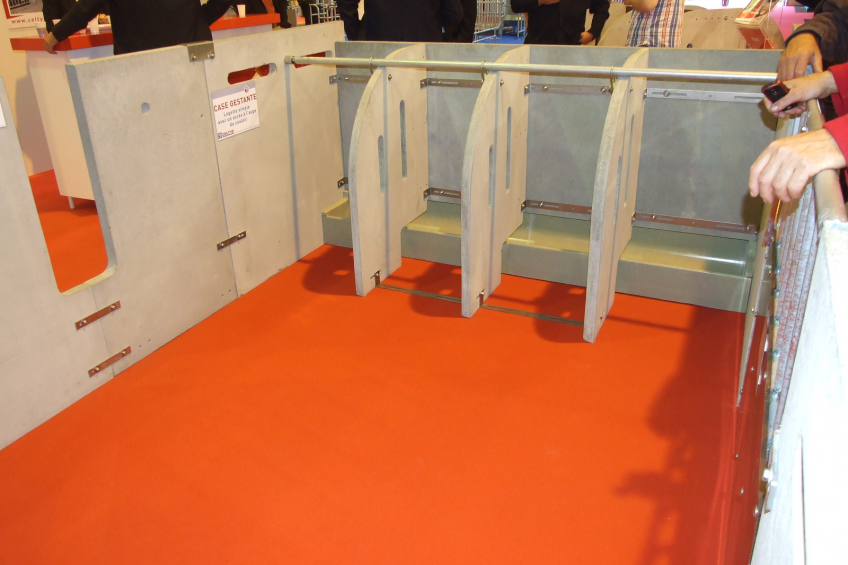France enjoys last SPACE before sow stall ban

Just like last year, the annual trade show SPACE in Rennes, France, focused intensely on the upcoming partial sow stall ban, on 1 January 2013. Companies had one last chance to display the alternative housing systems. But what will happen to those who did not manage to convert? Nobody knows as yet.
By Stuart Lumb
This year’s annual French livestock show SPACE, held 11-14 September, was its usual busy bustling self with almost 110,000 visitors. The halls were full of gleaming equipment overseen by eager salesmen. 1 January 2013 heralds in the EU partial sow stall ban and hardly surprisingly there was a wide range of group sow housing equipment on display. Several companies showed free access stalls or Electronic Sow Feeding transponder operated systems. Others featured very basic options which comprised of long troughs with dividers which allow sows a degree of individual feeding. Obviously some producers will simply cut down their existing sow stalls and allow the sows to run free, but long narrow stall houses don’t convert into very good group housing pens. This option costs very little to implement but sow management will be tricky.
French pig producers have not enjoyed good returns for a while with grumbles about pork imports depressing prices. Hence finding the finance to fund new sow housing has been difficult for many producers although this 2013 legislation has been made known for years. This has impacted on their choice of housing system, along with the fact that the average size of French units is only around the 200 sow mark. With large units it is possible to wean 80 sows at a time which is the ideal size for many ESF systems. A producer with 200 sows would have to keep mixing sows in to make best economic use of an ESF, plus there can be problems with sows fighting and so other housing options are more attractive. Liquid feeding (‘soup’ in French) has always been popular in France and so penning sows in groups and feeding via a trough, with or without dividers, is considered an option. A group size of six allows sows to be graded by size, very important in order to stop bullying. Even so, some sows are slow eaters and will lose out compared to sows that eat much faster.
Effects
What effect will the partial stall ban have on French sow numbers after 2012? One opinion offered was that 10% of producers would leave the industry, more than likely these would be farmers nearing retirement age. Another view was that 90-95% of French producers will move over to loose housing, but how many will be legal by 1 January 2013 is debatable.
Many producers, not only in France but elsewhere in Europe, have left it late to revamp their housing. They have had problems with planning, getting finance plus of course building companies are working flat out and cannot satisfy the demand. Slats are in short supply and consequently there will be large numbers of producers who will be in limbo on 1 January. What is not clear, both in France as elsewhere in Europe, is how long it will take the authorities to identify these non-compliant producers and once having identified them what to do about them and what to do about non-compliant pigs. Certainly the authorities are going to have to move very fast as those producers who have got their act together in time and who are compliant on 1 January will be extremely cross if they see the new legislation has only been adopted by some. An added complication is that dealing with non-compliant pig farms will be exceedingly more complex than dealing with non-compliant laying hens in battery cages.European pig numbers are forecast to drop due to those leaving the industry and selling up. A drop of just one pig per sow per year would certainly have a big impact on total European pig numbers, so 2013 is certainly shaping up to be a year to remember as far as pig production in France, as well as Europe, is concerned.











